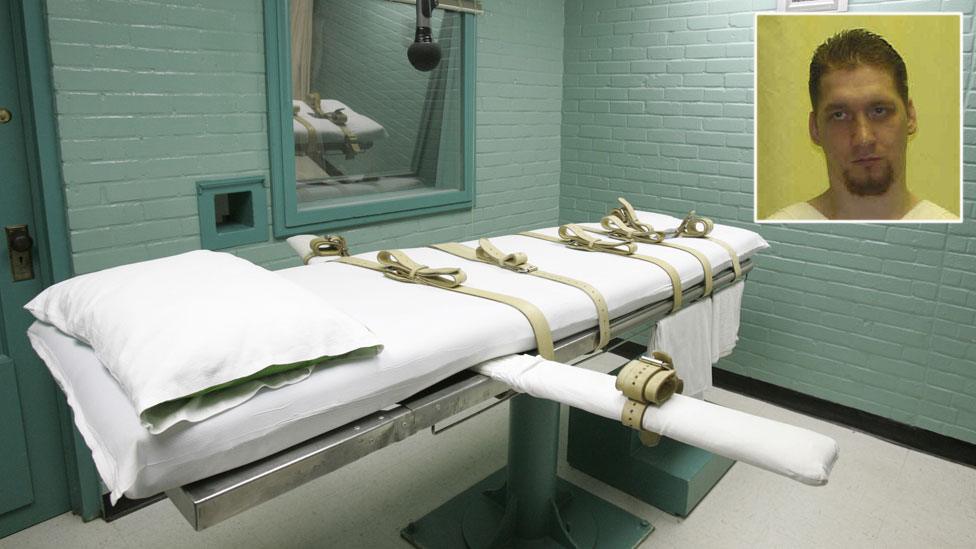Ohio to resume executions using a three-drug combination in January
- Published

Ronald Phillips (inset), who was convicted for the rape and murder of his girlfriend's 3-year-old daughter in 1993, is scheduled for the first execution on 12 January
The US state of Ohio is set to resume executions in January using a three-drug combination after stalling lethal injections for nearly three years.
Ohio has not executed anyone since January 2014, in part due to death row lawsuits and a drug shortage.
A new execution policy is expected to be announced at the end of the week.
Inmate Ronald Phillip, convicted of the 1993 rape and murder of a girlfriend's three-year-old daughter, is set for the first execution on 12 January.
Is the death penalty dying out in the US?
Ohio plans to use a cocktail of midazolam, which sedates the inmate; rocuronium bromide, which paralyses the inmate; and potassium chloride, which stops the heart.
Assistant Attorney General Thomas Madden told Columbus federal Judge Edmund Sargus that the drugs were FDA approved.
The US Supreme Court also upheld the use of such a combination in a ruling last year.
Ohio's last execution was of Dennis McGuire in January 2014 using a two-drug combination - including midazolam - in a procedure that lasted 26 minutes.
He was convicted for the rape and murder of a pregnant woman in 1993.
Does a death sentence always mean death?
Witnesses said the inmate began seizing and gasping during the lethal injection.
After McGuire's death, Ohio changed its policy to allow for single doses of two alternative drugs, sodium thiopental and pentobarbital.
But the state halted executions until 12 January, 2017 after manufacturers banned use of the drugs for executions.
Ohio is among several states that have had problems securing legal supplies of drugs used in lethal injections.
Republican Governor John Kasich signed a bill into law in 2014 allowing the names of companies that provide the drugs to remain confidential.
The state has more than two dozen executions scheduled for as far as October 2019.
Attorneys for death row inmates said they plan to file a new challenge after Monday's announcement.
- Published30 September 2016